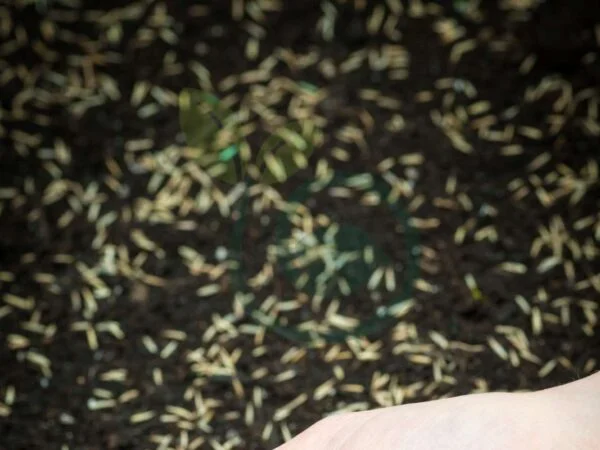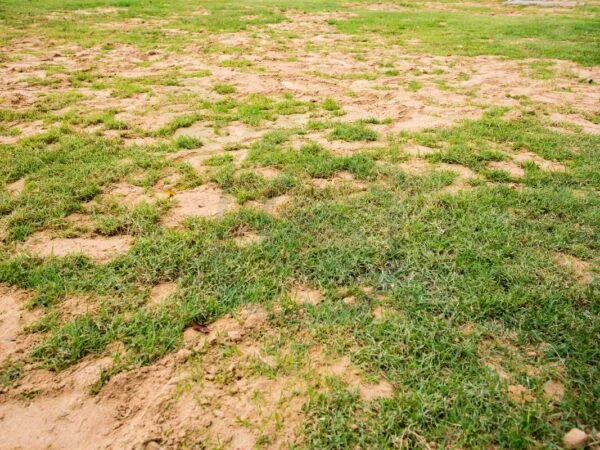Did you know that over 60% of bermuda grass seed failures, especially in new lawns, are due to improper watering, leading to underwatering and drought stress? Understanding the right watering schedule is crucial for nurturing vibrant and healthy bermuda grass. By following a tailored watering routine, you can significantly boost your grass's growth potential and resilience. In this comprehensive guide, we will delve into the essential steps to create an effective bermuda grass seed watering schedule that ensures optimal growth and lush greenery in your lawn.
Key Takeaways
- Consistent Watering: Establish a regular watering schedule after planting Bermuda grass seed to promote healthy growth and root development.
- Adjust Watering Based on Weather: Monitor weather conditions and adjust watering frequency accordingly to prevent overwatering or underwatering.
- Early Intervention: Address common issues like dry patches or yellowing grass promptly by adjusting watering practices to maintain a lush lawn.
- Proper Mowing Techniques: Follow recommended mowing heights and frequencies to ensure the health and resilience of your Bermuda grass.
- Regular Maintenance: Implement a routine maintenance schedule that includes fertilization, aeration, and overseeding to keep your Bermuda grass vibrant and thick.
- Timely Repairs: Quickly repair damaged areas by overseeding with Bermuda grass seed to restore the uniformity and density of your lawn.
Understanding Bermuda Grass
Seed Selection
Bermuda grass seeds play a crucial role in establishing a lush and healthy lawn. Choose high-quality seeds with excellent germination rates to ensure successful growth. Look for certified seeds that are free from weeds and contaminants, guaranteeing a pristine lawn appearance. Opt for seeds specifically tailored to your climate and soil conditions for the best results.
Growth Patterns
Understanding the growth patterns of bermuda grass is essential for proper maintenance. Recognize its lateral growth nature, spreading horizontally to create dense coverage. The grass repairs itself through creeping stems, ensuring quick recovery from damage or stress. Be mindful of dormancy during winter months in cooler regions, where growth slows down significantly.
Climate Preferences
Bermuda grass thrives in sunny environments, so it's vital to plant it in an area that receives full sunlight. Consider the grass's tolerance to heat, drought, salt, and traffic when selecting your planting location. Keep in mind that bermuda grass excels in warm-season climates where temperatures remain consistently high.
Preparing for Planting
Soil Testing
Conduct soil tests to assess nutrient levels and pH balance accurately. Adjust soil composition accordingly for optimal bermuda grass growth. Test soil drainage to prevent waterlogging, ensuring healthy root development.
Area Clearing
Clear the planting site of debris, rocks, and existing vegetation thoroughly. Level the ground meticulously to create a smooth surface conducive to seed germination. Eliminate any obstacles that could impede proper seed-to-soil contact for successful establishment.
Soil Amendments
Consider enriching the soil with organic matter or fertilizers to enhance its quality before seeding. Incorporate compost or peat moss into the soil mixture to improve structure and nutrient retention capacity effectively. Adhere strictly to recommended guidelines when amending the soil pre-seeding for best results.
Planting Bermuda Grass Seed
Sowing Techniques
Using a spreader is crucial to evenly distribute bermuda grass seeds across the planting area. Lightly rake the seeds into the soil surface for optimal seed-to-soil contact. Firming the soil post-seeding helps secure the seeds in place efficiently.
Optimal Timing
Plant bermuda grass seeds in late spring, ensuring frost has passed and temperatures are consistently warm. Avoid planting during extreme weather conditions that could hinder seed germination. Select an appropriate time according to your local climate and growing season for successful growth.
Seed Coverage
- To guarantee uniformity, ensure even coverage of bermuda grass seeds throughout the entire lawn area.
- Pay close attention to overlapping patterns while spreading seeds to prevent any bare spots from forming.
- Adjust seeding density based on your preference for the desired thickness of the grass cover.
Initial Watering Schedule
Germination Phase
Frequency
- Water newly seeded areas 3 to 4 times daily to maintain moisture levels.
- Gradually reduce watering frequency as seedlings establish themselves.
- Monitor moisture levels regularly to prevent under or overwatering issues.
Volume
First Weeks
During the first weeks after planting Bermuda grass seed, it is crucial to pay close attention to the watering schedule. Ensuring the right amount of water is essential for the germination phase.
Adjustments should be made based on weather conditions and soil moisture. If there are periods of heavy rain, reduce watering accordingly to avoid oversaturation.
Signs of overwatering include yellowing grass, a musty smell, and squishy soil underfoot. On the other hand, underwatered grass will appear wilted and dry.
Ongoing Watering Strategies
Seasonal Adjustments
Adjust the watering frequency based on the seasons to meet the changing needs of Bermuda grass. During summer, increase watering to combat heat stress and evaporation, ensuring deep root growth. In contrast, reduce watering in winter when grass enters dormancy to prevent over-saturation.
In spring and fall, maintain a moderate watering schedule for Bermuda grass as it transitions between active growth and dormancy. Consider factors like temperature changes and daylight duration when adapting your watering routine throughout the year.
Weather Considerations
Stay vigilant of weather patterns that can impact your Bermuda grass's water requirements. In periods of high temperatures or drought, increase watering frequency to prevent wilting and browning of the grass. Conversely, during rainy spells or cooler temperatures, adjust your watering schedule accordingly to avoid waterlogging.
Monitor local weather forecasts regularly to anticipate any extreme conditions that may affect your Bermuda grass's health and adjust the watering regimen promptly. By staying proactive with weather considerations, you can ensure optimal growth and vitality for your lawn.
Soil Moisture Monitoring
Regularly check soil moisture levels by inserting a screwdriver into the ground; if it meets resistance, it indicates sufficient moisture content. Alternatively, use a soil moisture meter for accurate readings on hydration levels within the soil around your Bermuda grass roots.
Maintaining proper soil moisture is crucial for Bermuda grass health; aim for consistent dampness without over-saturation or dryness. Adjust your watering schedule based on these measurements to ensure an ideal balance that promotes robust root development and lush greenery.
Preventing Common Issues
Overwatering Risks
Overwatering your Bermuda grass can lead to root rot, a condition where the roots are damaged by excessive moisture. This can result in the grass turning yellow and eventually dying. To avoid this, ensure that you allow the soil to dry out between watering sessions.
Excessive watering can also create a breeding ground for fungus, which thrives in moist environments. Signs of fungus include brown patches on the grass and a musty odor emanating from the lawn. Be cautious not to water excessively, especially during periods of high humidity.
Underwatering Signs
When Bermuda grass doesn't receive enough water, it exhibits signs such as wilting leaves and a dull, bluish-green color. The blades may also begin to curl or fold in an attempt to conserve moisture. To prevent underwatering issues, make sure you water deeply but infrequently.
Another sign of underwatering is when footprints or mower tracks remain visible on the lawn after activity due to lack of moisture. If you notice these signs, increase your watering frequency gradually until the grass appears healthy again.
Disease Prevention
To prevent diseases such as dollar spot and brown patch, it's crucial to maintain proper watering practices for your Bermuda grass. These diseases thrive in moist conditions, so ensuring adequate drainage is essential for disease prevention. Avoid watering late in the evening or at night to reduce prolonged leaf wetness.
Proper airflow around the grass is also vital for disease prevention since stagnant air can contribute to fungal growth. Consider trimming back overhanging branches or bushes that obstruct air circulation over your lawn area.
Mowing and Maintenance
Initial Mowing
When mowing newly planted Bermuda grass, ensure it reaches a height of at least 1.5 inches before the first mow. This allows the grass to establish strong roots. Begin by setting your mower blade at the highest level to avoid stressing the young grass. Gradually reduce the cutting height with each subsequent mow until reaching the ideal height of around 0.5-1 inch.
To prevent damage, avoid removing more than one-third of the grass blade length in a single mow session. This practice promotes healthy growth and helps combat invasive weeds, such as broadleaf weeds commonly found in Southern lawns.
Regular Schedule
Establishing a consistent mowing schedule is crucial for Bermuda grass maintenance. Aim to mow your lawn every 5-7 days, depending on its growth rate and seasonality. During peak growing seasons like spring and summer, you may need to increase frequency to maintain an optimal appearance.
Regularly inspect your mower blades for sharpness as dull blades can tear rather than cut the grass cleanly, leading to stress and potential diseases in Bermuda grass. Sharpen or replace blades as needed to ensure a clean cut that promotes healthier turf.
Height Adjustments
Adjusting your mower's cutting height throughout the year is essential for Bermuda grass health. Maintain a higher cutting height during hot summer months to provide shade for soil moisture retention and protect against heat stress. In cooler seasons, gradually lower the cutting height while still adhering to the one-third rule.
Fertilization and Care
Nutrient Requirements
Bermuda grass seed requires specific nutrients to thrive, such as nitrogen, phosphorus, and potassium. These nutrients promote healthy root development and overall plant growth. Ensuring the right balance of these nutrients is crucial for a lush lawn.
To meet the nutrient requirements, consider conducting a soil test to determine the current levels of nitrogen, phosphorus, and potassium in your soil. Based on the results, you can then choose a fertilizer with the appropriate nutrient ratios to supplement any deficiencies.
Application Schedule
Timing is key. The best time to apply fertilizer is during the growing season, typically in late spring or early summer. Avoid fertilizing during periods of drought or extreme heat as this can stress the grass.
Divide your fertilization schedule into multiple applications throughout the growing season rather than applying all at once. This approach helps prevent nutrient runoff and ensures that your Bermuda grass receives a steady supply of essential nutrients.
Organic Options
For those looking for organic alternatives for fertilizing Bermuda grass seed, there are several options available. Utilizing organic fertilizers not only provides essential nutrients but also improves soil structure and promotes microbial activity.
Consider using compost, manure, or organic lawn fertilizers that are rich in natural ingredients like bone meal or seaweed extract. These organic options offer a sustainable way to nourish your Bermuda grass while minimizing environmental impact.
Repairing and Overseeding
Patch Repair Techniques
When repairing bare spots in your bermuda grass lawn, start by removing any dead grass and loosening the soil. Next, spread bermuda grass seeds evenly over the area.
To ensure proper germination, lightly rake the seeds into the soil and water gently. Keep the area consistently moist until new grass sprouts, typically within 7-10 days.
Overseeding for Density
Overseeding is a great way to improve the density of your bermuda grass lawn. Begin by mowing your existing lawn short to allow sunlight to reach the soil surface.
Spread bermuda grass seeds evenly across your lawn using a seed spreader. Water lightly immediately after overseeding and continue to keep the soil moist until new growth appears.
Winter Preparation
As winter approaches, it's essential to prepare your bermuda grass for dormancy. Gradually reduce watering frequency in late fall to help harden off the turf.
Mow your lawn slightly shorter than usual before winter sets in but avoid scalping it. Apply a high-potassium fertilizer in late fall to promote root growth during dormancy.
Summary
You've now learned all about Bermuda grass, from understanding its characteristics to planting and maintaining it. By following the watering schedule provided, you can ensure your Bermuda grass seed grows into a lush and healthy lawn. Remember to stay consistent with your watering routine to promote strong root development and overall growth. Implementing the tips for ongoing watering strategies will help you maintain a vibrant lawn throughout the seasons.
Now that you have the knowledge and tools to care for your Bermuda grass, go ahead and start applying these practices to achieve a beautiful and thriving lawn. Your dedication to proper watering and maintenance will be rewarded with a stunning Bermuda grass landscape that you can enjoy for years to come.
Frequently Asked Questions
How often should I water Bermuda grass seed after planting?
After planting Bermuda grass seed, water the area lightly 2-3 times a day to keep the soil moist. Avoid overwatering, which can lead to issues like rotting seeds or fungal growth.
When is the best time to plant Bermuda grass seed?
The best time to plant Bermuda grass seed is during late spring or early summer when soil temperatures are consistently above 65°F. This allows for optimal germination and establishment of the grass.
How do I prevent common issues when growing Bermuda grass?
To prevent common issues when growing Bermuda grass, ensure proper drainage, avoid over-fertilizing, mow at the correct height (1-1.5 inches), and follow a consistent watering schedule. Regular maintenance and monitoring can also help identify problems early.
What is the recommended fertilization schedule for Bermuda grass?
For optimal growth, fertilize Bermuda grass in late spring with a balanced fertilizer high in nitrogen. Repeat applications every 6-8 weeks throughout the growing season but avoid fertilizing during periods of drought or dormancy.
Can I overseed my existing Bermuda grass lawn?
Yes, you can overseed your existing Bermuda grass lawn to fill in bare patches or improve thickness. Choose high-quality seeds that match your current variety and follow proper overseeding techniques for successful results.
Image Source: Paid image from CANVA




